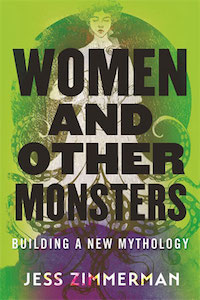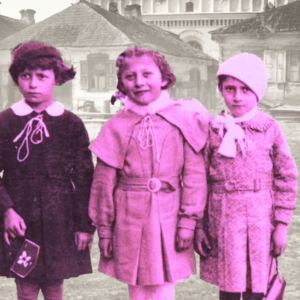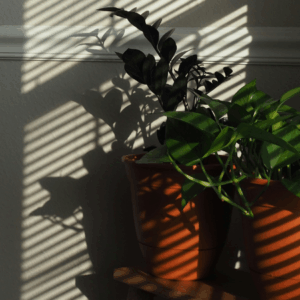
A Fury’s Battle: How Our Culture Demonizes Women’s Anger and Protects Abusers
Jess Zimmerman on #MeToo and the Failures of the Justice System
What makes women’s anger monstrous? As with hunger and brilliance and ambition, it’s partly just the overstepping of closely guarded bounds. There will always be only so much emotion a woman, even a supposedly powerful woman, is allowed to have. Anger in particular is more stingily restricted the darker you are. The perennially restrained Michelle Obama was dogged by accusations of outsized anger for her eight years in the White House and beyond, simply because she was female and Black and, very gently, nobody’s fool.
But women’s anger is particularly reviled when it is nocked and aimed, the sharp end of an unwavering system of beliefs about what we will not endure. A Fury’s anger. Men fear our chaotic rage, but not nearly as much as they fear our focused grievances about very real injustice. There is little more threatening to the social order than a woman who’s angry. The only thing scarier is a woman who’s angry about something. The only thing scarier than that is a woman who’s right.
A 2015 study from Arizona State University, which looked at gender bias in a simulated jury deliberation, found that men were deemed more credible when they spoke with heat while women expressing anger made the people around them stubborn and resistant. Subjects participated in a mock trial in which they had to agree with other “jurors”—purportedly other study participants but actually creations of the researchers—on whether to convict. Through messages, four of the five fictional jurors would agree with whatever verdict the participant settled on. The remaining one—the only juror given a gender-coded name—would disagree. This holdout might express his or her dissenting opinion with anger, with fear, or in a neutral tone.
When the holdout’s name sounded like a man’s, and he spoke with passion, subjects were often swayed. When the hold-out’s name sounded like a woman’s, they doubled down on their original opinion. Or, in academic-ese: “Participants’ confidence in their own verdict dropped significantly after male holdouts expressed anger. Participants became significantly more confident in their original verdicts after female holdouts expressed anger, even though they were expressing the exact same opinion and emotion as the male holdouts.”
“What is most disturbing about the findings is that they were produced by anger, specifically,” said the study’s coauthor Jessica Salerno in a press release. “If you think about when we express anger, it is often when we really care about something, when we are most passionate and most convicted about a decision. Our results suggest that gender gaps in influence are most likely to materialize in these situations—when we are arguing for something we care about most.”
This same instinct—to fear and denigrate women’s anger specifically when it comes from principle—is behind the absurd online insult “Social Justice Warrior.” This supposed taunt, levied not exclusively but especially at women who stand up for progressive principles, accidentally sounds cool as hell. It’s not the first insult to be picked up as a self-identifier and a rallying cry—that’s a classic arc for slurs—but it may be the first to have failed so thoroughly as a put-down right from the start. I don’t think anyone has ever been hurt by being described as a fierce and tireless fighter for justice.
In truth, so-called social justice warriors are often fighting more for courtesy. The behavior most likely to get you called an SJW is suggesting that it’s worthwhile not to cavalierly hurt people’s feelings, whether or not you think their feelings are right. Spokespeople for this cause might more accurately, although much less inspirationally, be called social justice butlers: they advocate doing the subtle, sometimes tedious background work of making sure people are comfortable, considered, and not unduly put out. We go not into battle but into buttle.
But the Furies are social justice warriors, make no mistake: literal warriors for actual justice. They’re the ones who show up when it’s too late to keep someone from getting hurt. They don’t ask politely for recognition, but demand redress for injury—not just to be made whole but to see the abusers punished. And the idea of this kind of vengeance is so terrifying to a certain kind of man that even its faintest echoes must be mocked into submission. If we let them demand courtesy, who knows what else they’ll ask for? If we let them say “stop hurting us,” how long until they say “we seek revenge”?
People who ask for kindness are called “warriors” to embarrass us, to make us feel like we’re overreacting so we’re ashamed to ask for more. Those who go to war for justice are called “kindly” to mollify or belittle them. It’s a way of pushing us around with words: the euphemisms, the sarcasm, both efforts at control. But it’s good to be a warrior, and it’s good to be kind. And when the cause is justice, a warrior is the kindest thing you can be.
*
In the last few years—not by coincidence, the years in which the term “Social Justice Warrior” was created, weaponized, and reclaimed—we’ve seen a brief, white-hot heyday of female rage. Several books on women’s anger came out in the United States in 2018 and 2019: Soraya Chemaly’s Rage Becomes Her, which touts the personal and social benefits of embracing anger; Brittney Cooper’s Eloquent Rage, which looks specifically at how Black women are reclaiming anger they’ve long been denied; Clementine Ford’s Fight Like a Girl, a feminist memoir-manifesto with anger as one of its guiding spirits; Rebecca Traister’s Good and Mad, which focuses on the way women’s anger shaped political action historically and after the 2016 election; and Lilly Dancyger’s anthology Burn It Down: Women Writing About Anger.
This increased scrutiny of anger—and increased encouragement for women to get in touch with their outrage—coincided, not surprisingly, with a several-year run of high-profile situations in which women were killed, raped, mistreated, harassed, abused, or denied what they deserved. There were the 2014 Isla Vista killings, in which 22-year-old Elliot Rodger killed six people and injured 14, explaining his action in a 100,000-word document detailing his sexual frustration and misogynist anger. This was not the first or last mass murder committed by a man aggrieved about women denying him sex, but it was the first to come with a manifesto and to occur at a time when the internet was becoming especially weaponized. (Only a few months later, similarly motivated young men started gang-harassing and threatening women online under the guise of “ethics in games journalism.”)
There is little more threatening to the social order than a woman who’s angry.
There was the 2015 resurgence of the open-secret allegations against Bill Cosby, who would eventually be found guilty of three charges of aggravated assault but not before abusing as many as 60 women over decades, all while maintaining his cultural position as a beloved, trusted father figure. There was the pathetically short sentence given to alleged rapist Brock Turner in early 2016, and the powerful letter from his accuser that elevated the case in the public awareness above all the other pathetically short sentences given to alleged rapists with “bright futures.”
There was, of course, the 2016 election, in which a flawed but competent woman lost to a heaving garbage pile of a man, despite her being more qualified and more popular. Every aspect of that endless election season, from Trump’s menacing loom on the debate stage to the fact that he won despite bragging about sexual assault, was somewhere on the spectrum between a needle under the fingernail and a cleaver to the heart. (This largely held true even if you’d preferred the imperfect woman’s first opponent, an imperfect man.) There were the explosive New York Times and New Yorker articles in October 2017, disclosing how powerful Hollywood producer Harvey Weinstein had been groping and propositioning (and, it came out later, more violently assaulting) women for decades, and threatening or blacklisting those who complained. There was the string of other high-profile allegations: Louis C.K., Roy Moore, Ryan Adams, Chris Hardwick.
But the outrages and abuses weren’t new. Men had always been manipulating, abusing, gaslighting, menacing, grabbing pussies, cheating to win, and letting one another off the hook. What was new, what inspired these deep dives into the meaning and mechanism of female anger, was the sense that perhaps this time we’d advanced far enough, fought hard enough, come together enough that something could happen. Maybe, finally, we could ask for justice.
For a brief moment there were millions of Furies: the dozens of abused women who scraped together the courage to share their stories; the hundreds who viewed and contributed to the Shitty Media Men list, feminist writer Moira Donegan’s whisper network clearinghouse that collected a lifetime of private warnings about dangerous men in one easily accessible place; the thousands who participated in the hashtags #YesAllWomen, started by a young Muslim woman in response to Isla Vista, and #MeToo, originated by activist Tarana Burke and repopularized in Weinstein’s wake. Using the hashtags, women and others shared their experiences of sexual harassment, violence, rape, coercion, abuse, manipulation, and corrosive shame, and then the cleansing anger. It was relentless, a rolling tide of grievance and anguish and, once that spilled over and boiled off, a tectonic ridge of vengeance-hunger, thrusting up through the hot sea of anger like a mountain range where two immovable objects collide. Clearly something was in the air: the desire to see wrongdoers finally named and punished, to drown out the abusers and enablers with the force of our calls for blood.
But at the same time, almost overlapping with this bank-breaking fury, there was an accompanying sense of futility: the realization that the version of justice we were demanding had little in common with any existing mechanisms for punishment or retribution. Many of us knew this already, of course. Black women knew. Tarana Burke had started using the “me too” phrasing all the way back in 2006 to talk about sexual abuse against young women of color, and not much had changed. But Black women have never gotten to be the noisy ones. So there was a great swell of noise, amplified by famous and beautiful white women, who have always been allowed to be the loudest as long as they are, paradoxically, mostly quiet. (Though our culture prizes women’s silence and docility, it also overvalues white women’s pain; the resulting confusion can sometimes be used to great effect in protests.) And then there was a great hush.
I don’t mean to say that these burgeoning Furies gave up completely, or even lost hope, although many lost hope (or had been realistic enough to keep their hopes small to begin with). But it became impossible to truly believe in a future where some of these ancient wrongs against us were righted the day Brett Kavanaugh was confirmed to the US Supreme Court—despite being credibly accused of holding a girl down, covering her mouth, and trying to take her clothes off during his high school years.
The accuser, Christine Blasey Ford, was sober and consistent in the hearing. As a research psychologist, she effectively served as her own expert witness, explaining the mechanisms of trauma to an audience of powerful men who could not possibly understand and didn’t want to. Kavanaugh, for his part, frothed and yelled, his face twisted constantly into a rictus of rage. This anger was his main defense; surely only an honest man could be so affronted. As cultural commentator Lili Loofbourow writes in a Slate article: “Ford’s anger would have contaminated her motives. Given the reactions to Kavanaugh’s tirade, however, it’s clear that many still regard male anger as not just… acceptable but as corroborating: the fact of his inappropriate outburst somehow proves the legitimacy of whatever aroused it. Kavanaugh is angry, so what he’s angry about must be true!”
Kavanaugh shouted, and sneered, and lied overtly, and showed himself generally incapable of the comportment and rationality we depend on from the Supreme Court. (Think of the expression “sober as a judge,” and then think about Brett Kavanaugh bellowing, “I like beer!”) “We expect ordinary people in those circumstances to comport themselves with a modicum of dignity and restraint. For a lifetime appointment, one would think the standards for conduct and temperament would be rather higher,” Loofbourow writes. But it worked anyway. He was confirmed—a victory for chaotic, unfocused temper and a blow to Furies everywhere. There could be no clearer emblem of how much systems of order and righteousness had been perverted by the powerful than this: a belligerent, contemptuous, bigoted, almost certainly sexually abusive man being draped in the robes of the law and called “Justice.”
Though our culture prizes women’s silence and docility, it also overvalues white women’s pain.
The day Christine Blasey Ford calmly unearthed her worst traumas in front of an indifferent judiciary committee rendered every woman I know helpless, useless with rage. (You are chained in the flow of an active volcano.) If I’d thought I knew what it was to feel mass anger, the Kavanaugh hearings and their ultimate futility confirmed that I’d only been brushed by its shadow. A friend once said to me that the humidity in summer in DC was less like sweating than like being sweated on, and this was how our anger felt in the wake of Kavanaugh: like something that could not come from us, something too big for our bodies, a great beast rubbing up against us and oozing anger onto us from the outside. The possibility of justice, the possibility (never realistic, but once perhaps aspirational) that the law of the land could actually be just, slipped from our sweaty hands.
The Isla Vista shooter became a hero to disaffected young men online, inspiring copycat murders. Bill Cosby was sentenced to three to ten years, but money and power have never protected Black men like they do white men. Brock Turner, sentenced to six months, served three. Donald Trump not only grabbed the presidency after bragging on tape about sexual assault but parlayed it into a profitable golf vacation with interludes of cultish praise—despite more accusations of rape coming in during his term. Roy Moore, accused of sexually harassing teenage girls, lost his Senate seat but ran again with no shame. Louis C.K., who admitted to masturbating in front of female colleagues against their will, was dropped from a few shows and then returned to comedy less than a year later. Chris Hardwick, accused of emotional and sexual abuse of a girlfriend, hosts two shows on AMC. Brett Kavanaugh is in a position to overturn Roe v. Wade in our lifetime. (Harvey Weinstein was sentenced to 23 years, a small bright spot.) And the more the indignities have piled up, the harder it is to feel anger through the numbness and the fear. The beast keeps wreathing catlike around us, rubbing its corrosive sweat against our skin, and—like the DC humidity—we’ve found that it’s easier to bear if you just lie still.
But the anger never really goes away, however buried it is under bewilderment and hurt. The Furies, chthonic monsters, are there somewhere, underground.
__________________________________

Excerpted from Women and Other Monsters: Building a New Mythology. Reprinted with the permission of the publisher, Beacon Press. Copyright © 2021 by Jess Zimmerman.
Jess Zimmerman
Jess Zimmerman is an editor at Quirk Books and the author of Women and Other Monsters and Basic Witches (with Jaya Saxena).












